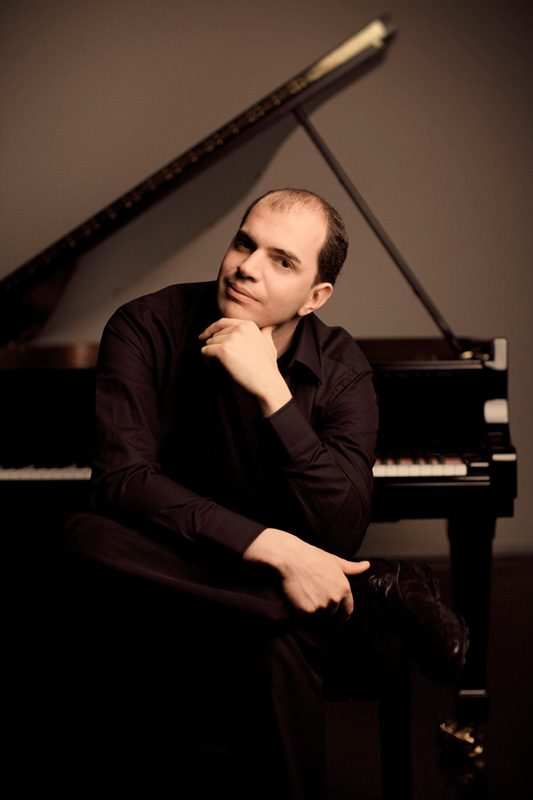You don’t have to live under a totalitarian regime to write music of profound anguish. I was driven to argue the point at a Shostakovich symposium when an audience quizzer took issue with my assertion that Britten could go just as deep as the Russian. Much as the works of the two composers in this programme, Shostakovich’s Second Piano Concerto and Britten’s Spring Symphony, revealed their lighter sides to varying degrees, it was our anniversary composer who scored highest with his darker undercurrents. Conductor Edward Gardner’s further touch of class was to avoid giving one of what will surely be hundreds of performances of Britten’s Peter Grimes Sea Interludes in this centenary year and to root instead for his teacher Frank Bridge’s The Sea.
Many of us in the Festival Hall would probably have agreed with young Benjamin when he wrote that The Sea “pleases me enormously – although it’s not as interesting as [Bridge’s] later stuff.” These marine oils, sometimes thickly applied, don’t quite sail out from under the shadows of Wagner and Debussy – though it was only 1910, after all. Bridge has a hand of beautifully wrought melodic cards, and if he doesn’t always know what to do with them, they tide us over until a storm that’s not a patch on the Mahlerian thrash to come in Grimes.
 Gardner seemed to be going for the film-score effect as surely as Hollywood-crazy John Wilson. The billowing strings were nicely set up by those wonderful passages for the violas near the beginning; the woodwind flecked us with sea-foam in the only movement that isn’t just a bit too long for its material; and the flute wrought moonshine with as heartaching a melody as Britten’s later, short-lived moment of calm in the midst of operatic crisis.
Gardner seemed to be going for the film-score effect as surely as Hollywood-crazy John Wilson. The billowing strings were nicely set up by those wonderful passages for the violas near the beginning; the woodwind flecked us with sea-foam in the only movement that isn’t just a bit too long for its material; and the flute wrought moonshine with as heartaching a melody as Britten’s later, short-lived moment of calm in the midst of operatic crisis.
The cinemascope lushness was nicely offset by crisp high jinks in the Shostakovich concerto. Kirill Gerstein (pictured right by Marco Borggreve) has played probably more chamber music than solo concerto roles, so he knew to give the pawky players at the start their due, shocking us in the gear change from modest single octaves to roaring double in a first-movement development which seems to bare the fangs of the Tenth Symphony’s whirlwind scherzo. A cool touch helped with the surprisingly nostalgic classic-romantic melody of the Andante, and the finale’s intoxicating piano etudes between lurching dances were as exhilarating as they can be: perfection, in short.
Perfect, too, were the three soloists in Britten’s oddball anthology of weird spring poems. Allan Clayton waxes brighter every time I hear him; there’s all the sensitivity and none of the vocal limitations of the Bostridge manner to his clear, intelligent articulation. Susan Gritton was the pretty May Queen with point, but the heart and soul of the piece belonged to mezzo Christine Rice (pictured below by Rob Moore). Fresh from her stunning Ariadne in Birtwistle’s The Minotaur, she brought a classical poise that was all the more affecting for its restraint to Britten’s selective setting of the poem I love most, Auden’s “A Summer Night”; the explosion of conflict from eastern Europe into the enchanted English June night-picture came as all the greater a shock.
 And how Britten colours this – woodwind only throughout, alto flute and bass clarinet hinting at the canker in the rose as surely as they do in The Rape of Lucretia and The Turn of the Screw. His scoring is selective and deliciously perverse: marauding bands of brass and creepy-crawly, Stravinsky Rite-like woodwind in the stone-cold introduction, trumpet cuckoos, violins only in spring showers and a cowhorn cutting through the set-up of the riotous finale.
And how Britten colours this – woodwind only throughout, alto flute and bass clarinet hinting at the canker in the rose as surely as they do in The Rape of Lucretia and The Turn of the Screw. His scoring is selective and deliciously perverse: marauding bands of brass and creepy-crawly, Stravinsky Rite-like woodwind in the stone-cold introduction, trumpet cuckoos, violins only in spring showers and a cowhorn cutting through the set-up of the riotous finale.
Gardner polished and honed all this unflappably. There was much spine-tingling delivery of the amazing choral writing from the glorious Birmingham choirs Gardner brought with him from an earlier performance of the Spring Symphony there last month: not just the CBSO’s adult forces but a panoply of children – mostly girls, it has to be said – for the unforgettably cheeky numbers, whistling and all. As the finale’s rollicking waltz was joined by “Sumer is icumen in”, the light was blinding, if you’ll forgive mixed metaphors. Gardner has already shown us what a master conductor of Britten he is with the ENO Grimes; here he proved that this quirky anthology is just as much of a masterpiece in its own lopsided way.
- Ashkenazy conducts the next Philharmonia concert, of Britten and Shostakovich, at the RFH on Thursday 21 February
- Read David Nice's blog, I'll Think of Something Later















Add comment